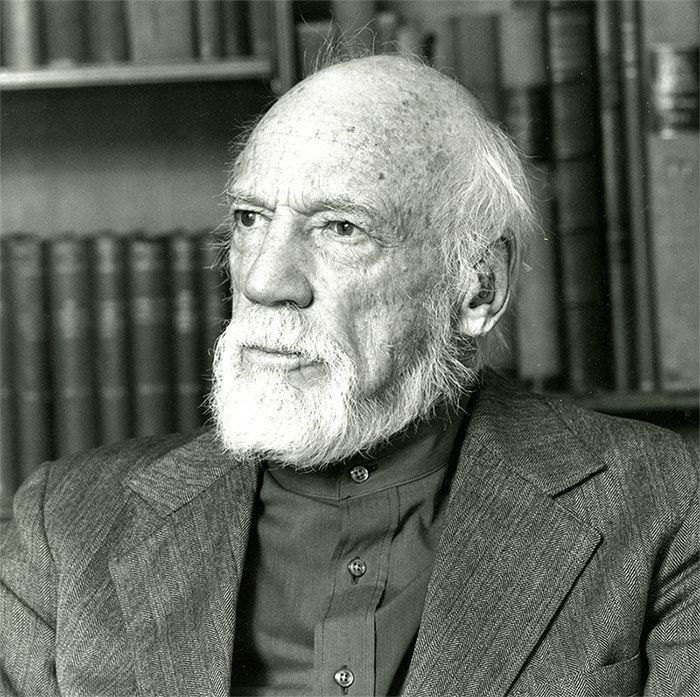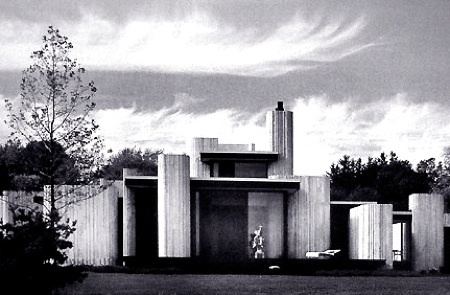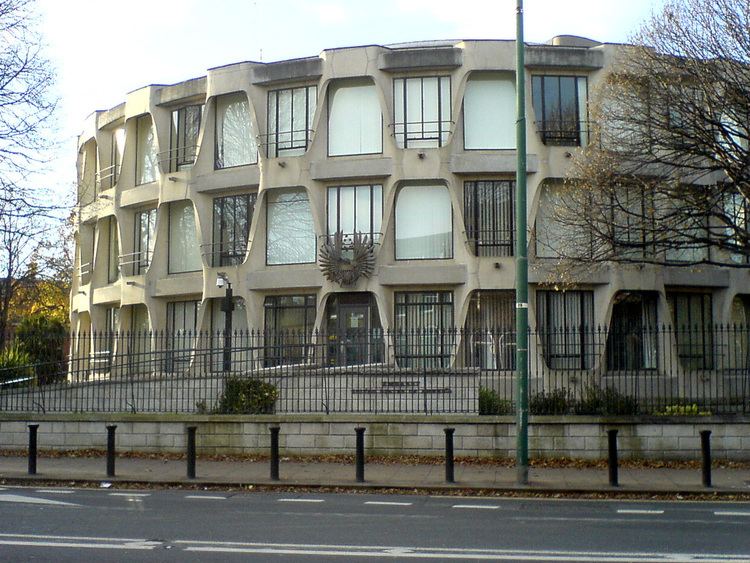Name John Johansen | Role Architect | |
 | ||
Died October 26, 2012, Brewster, Massachusetts, United States Books Nanoarchitecture, John M. Johansen: A Life in the Continuum of Modern Architecture Similar Ulrich Franzen, Eliot Noyes, Paul Rudolph (architect) | ||
The restless creative spirit life and work of john m johansen
John MacLane Johansen (June 29, 1916 – October 26, 2012) was an architect and a member of the Harvard Five. Johansen took an active role in the modern movement.
Contents
- The restless creative spirit life and work of john m johansen
- JOHN M JOHANSEN Mummers Stage Center Theater Oklahoma City
- Early life
- Career
- Works
- References

JOHN M JOHANSEN: Mummers (Stage Center) Theater Oklahoma City
Early life

Johansen was born to two accomplished painters in New York City in 1916. Growing up in an artful family, Johansen said that his childhood was filled with spaces and enclosures and his childhood fantasies are present in many the designs he created during his adult years. He went to Harvard University and was taught the fundamentals of modern architecture by Walter Gropius, the founder of Bauhaus. In 1939, he graduated the Harvard Graduate School of Design with a Masters in Architecture. After World War II, Harvard graduates were highly sought after, and like many of his colleagues, was offered a job right on the spot. He proceeded to follow his career path starting out as a draftsman for Marcel Breuer. He then became a researcher for the National Housing Agency in Washington, D.C., and later joined the architect firm Skidmore, Owings and Merrill in New York. In 1948, Johansen settled down and established his own practice in New Canaan, Connecticut to accompany four of his other colleagues, Marcel Breuer, Philip Johnson, Landis Gores, and Eliot Noyes. From 1955 to 1960, he was the adjunct professor at Yale School of Architecture, which had happened to become a vigorous center for modernism. At the time of his death, he was married to Ati Gropius Johansen, noted art educator and daughter of Walter Gropius. They lived in Wellfleet, Massachusetts.
Career

Johansen’s designs stressed function over form and focused on social, urban, and anthropological conditions, and strived to avoid creating overpowering megastructures. He started out exploring the “box,” the single style to accompany the modern movement. Not only was the box economical, it was also easy to build, a stabilizer organizationally and aesthetically coherent. This investigation into such a structure led to the creation of Johansen House #1 in 1950, which was included in the Museum of Modern Art exhibit “Built in the U.S.A.” In 1955, his second box was built, this time a glass box; the McNiff House. In some of his houses, Johansen utilized Palladian elements such as the grotto, the classic cross plan, and the Palladian prototype of the central pavilion linked by low bridges to flanking pavilions. The Palladian prototype is most noticeably present in Villa Ponte, or the Warner House, built in 1957 in New Canaan, Connecticut. In 1969 he was elected into the National Academy of Design as an Associate member and became a full Academician in 1994.
Works

Some other noteworthy houses include the Goodyear House (1955), an early example of the Palladian style employed by Johansen; the Bridge House (1957); the Telephone Pole House (1968) made from 104 40 foot poles that brace the house into the side of a steep ravine; The Labyrinth House (1966) that has no windows but instead glass enclosures between one wall and another; and the Plastic Tent House (1975) was made of translucent plastic.
He was also known for his modern commercial buildings. The Morris A. Mechanic Theatre in Baltimore (1967) was characterized as “a highly sculptural centerpiece among more reserved office buildings.” It was the beginning of a series of buildings that stressed and embraced the functional parts of the buildings, allowing them to emerge, while being increasingly identified and emphasized. The Robert H. Goddard Library is one of Johansen’s experiments once again. He said that while creating this structure, “I moved toward a more articulated design by emphasizing the distinction between the ponderous structural frame and other elements that appear to be less firmly attached conceivably detachable or interchangeable parts."
Among his best known buildings are the Goddard Library at Clark University (1969), and the Mummers Theater in Oklahoma City (1970), an aggregation of fragmented units connected by walkways and tubes, which received an AIA award in 1972.
The Mechanic Theater in Baltimore, unused since 2004 and deemed unsuitable for a theater, saw demolition activities commence in 2014. The building had been considered for landmark status and adaptive reuse, while its owners proposed to redevelop the site with residential and retail development. Celebrated by some and criticized by others for its brutalist architecture, the building was listed first on VirtualTourist's 2009 list of the "World's Top Ten Ugliest Buildings". Demolition was proposed in 2012, delayed, and ultimately commenced in September 2014.
The Mummers Theater (more recently called Stage Center) in Oklahoma City was also demolished in 2014. Years of maintenance costs and a June 2010 flood led to its closure and consideration of alternative uses or demolition. In 2013 its owners declined a listing on the National Register of Historic Places. In July 2013 it was reported that the building would be sold, demolished, and replaced by a new 20 story tower; on January 16, 2014, the city's Downtown Design Review Committee voted 3–2 to approve demolition and make way for a new headquarters building for OGE Energy Corp. and a second building. Demolotion went ahead in July and was completed by October 2014.
